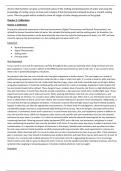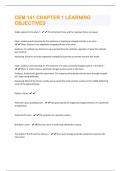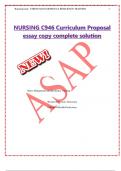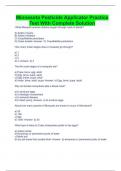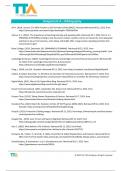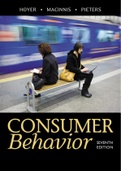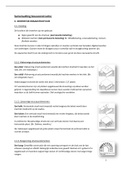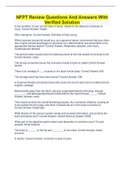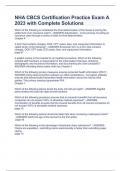knowledge of cooling curves to draw and compare if the thermometers allowed to draw a smooth cooling
curve. Then the graph will be studied to show all stages of state change presents on the graph.
Chapter 1: Calibration
Section 1: Calibration
During the calibration assessment of the two thermometers (Digital Thermometer and Normal Thermometer), we
utilized the known theoretical vales of water, this included the boiling point and the melting point. So therefore, the
accuracy of the thermometers can be determined by how close the value for boiling point of water is to 100° and how
close the value on the thermometer is to the melting point of water which is 0°.
Equipment
• Normal thermometer
• Digital Thermometer
• Boiling water
• Freezing water
Risk Assessment
It was crucial to carry out the operations carefully throughout this practical, especially when using chemicals and any
glass equipment. It was crucial to adhere to CLEAPSS Hazards requirements as well as lab rules. It was crucial to know
what to do in potentially dangerous situations.
Any physical risks that can occur include cuts from glass equipment or broken bones. This can happen as a result of
malfunctioning equipment, obstructions inside the lab, or slips or trips from spills. It's crucial to look for spills and clean
them up right once to reduce this risk. Underneath benches, bags, coats, and stools should be kept out of sight. Before
using glass equipment, it should be handled gently and examined for cracks or breakage. Equipment made of glass that
has any breaks should not be utilised. These dangers have a medium level of severity, but there is a high likelihood that
they will materialise. If any of these hazards actually materialise, a lab supervisor needs to be notified right away. These
experiments also make use of a Bunsen burner. When working with flames, risks that can occur include burns, and
things igniting. At all times, it is crucial to wear safety eyewear and a lab coat. When not in use, the Bunsen burner must
be on a safety flame so that it can be seen clearly. Hair must be held back to prevent it from catching fire. Additionally, it
is crucial that the lab has adequate ventilation. A instructor must be informed right away if any flame-related accidents
happen so that they can take the appropriate measurements. For these kinds of investigations, chemical hazards pose a
considerable danger and have a comparatively high likelihood of occurring. There are dangers associated with several
substances. If consumed, stearic acid is poisonous. It could irritate your eyes, skin, and respiratory system in addition to
your skin and skin tissue. While less dangerous than stearic acid, paraffin wax can nevertheless burn the skin severely
and harm the eyes when it is molten. It's critical to become familiar with the chemical hazard signals for any substances
containing chemicals. Wearing personal safety equipment (PPE) such a lab coat, eye protection, and gloves is crucial
when conducting the practical. Hair must be tied back at all times. It may also cause eye injury. In order to prevent cross
contamination, it is important to dispose of chemicals in the proper, labelled trash containers and use clean test tubes
for each new practical. Hands should be carefully cleansed with soap and water after each experiment to remove any
chemicals. When chemicals spill, it's crucial to make sure no skin is touched and to clean it up very after. If the substance
gets in someone's eye, they should immediately seek medical attention and clean their eye out with water for at least 15
minutes. It is crucial to seek medical attention if it is consumed, and if it is aggravating the person, try to encourage
them to drink some milk or water to dilute the toxin. Fresh air must be rapidly found after inhaling a chemical, and if any
symptoms like coughing or wheezing appear, immediate medical attention must be sought.
Procedure
, 1. Put a normal thermometer into the beaker with freezing cold water
2. Record the temperature of the cold water (theoretically 0°C)
3. Get hot boiling water through a kettle and pour it into a beaker carefully
4. Put a normal thermometer into the beaker with hot boiling water
5. Repeat steps 1-5 using an electric thermometer
6. Follow the calibration techniques below
Results
Boiling point Boiling point Melting point Melting point
Digital Thermometer 100 100.4 0 0.4
Normal Thermometer 100 94 0 -6
The results indicate that both thermometers are not accurate in correlation of theoretical values of the boiling and
melting point of water. This also let us identify the value by which the thermometer inaccurate by. For the digital
thermometer being (Value identified – 0.4) and for a normal thermometer being (Value identified + 6). However, this
helped us identify the most accurate one between the two and after examining the results the conclusion portrays the
digital thermometer to be more accurate compared to the normal thermometer. Therefore, now the experiments of
heating 2 substances can be carried out with the digital thermometer, which will help us produce a cooling curve of the
substances.
Chapter 2: Cooling curve of substances
Introduction
We used a digital thermometer to take temperature measurements every 0.5 minutes for a total of 15 minutes while
heating up both compounds. The temperature of both compounds was measured with a regular thermometer. The
results are shown in the graph below.
Equipment
- Bunsen burner
- Tongs
- Thermometer
- Test Tube
- Paraffin wax
- Stearic acid
Risk Assessment
Hazard Risk Prevention
Using glass The thermometer breaks - Carry gently when using
Thermometer and hurts someone - Keep away from edge of table
Hot wax One can burn one's skin - Be careful when pouring out of kettle
- Be careful when holding a beaker
containing hot water
Hot o One can slip and fall - Keep beaker or any container of the liquid
away from the edge of table
- Be careful when pouring/transferring
liquid

